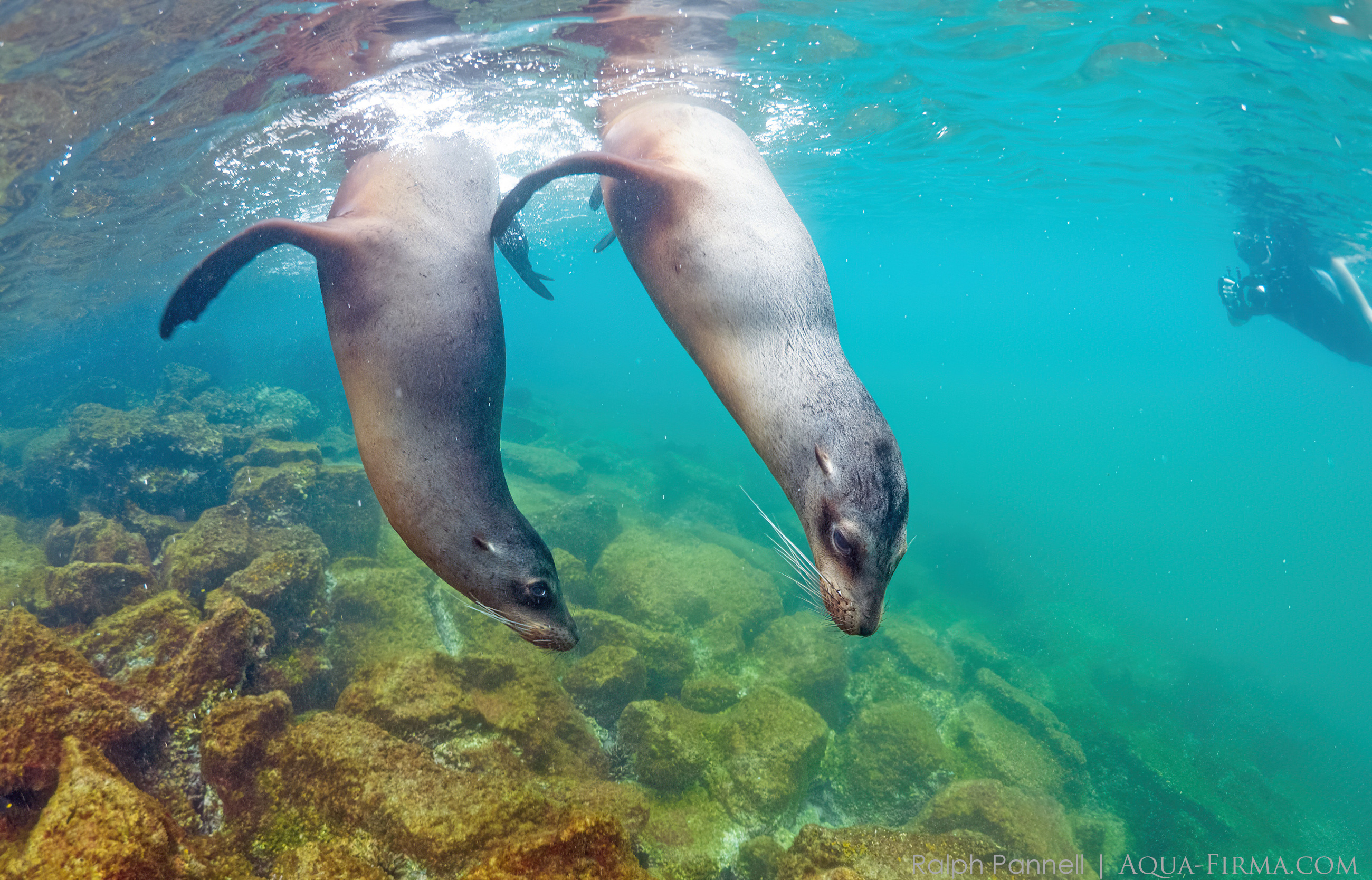Galapagos Shark Research Insights & Photography Dive Liveaboard
Galapagos
US$5,990
Galapagos Sealions and Fur Seals look quite similar at a first glance; and in fact they are both sealions. The most recognisable differences are in size*; the Fur Seal has a more furry and golden pelt when dry; and ears, which for Galapagos sealions stick out from the head, those on Fur Seals are flatter and closer to the head.
(*maximum 7ft / 2m weighing up to 360kg / 800lbs versus 5ft / 1.5m weight 64kg / 140lbs for male Fur Seals and just 28kg / 62lbs for a female)
Galapagos Sealions are a subspecies of the California Sealion; just smaller. Fur Seals are endemic to the Galapagos, having arrived in the islands from the South, courtesy of the Humboldt Current.

Fur Seals and Sealions are usually associated with cold water habitats - in fact we most commonly see these kind of animals in the Arctic, Antarctica, South Georgia, Chile, Argentina and western USA. Cold water is usually more productive, all the way up the food chain; whilst tropical waters, though blessed with coral reefs at the fringes, are otherwise usually clear blue and without much life in the daytime water column.
What makes the Galapagos different is its marine currents. The Panama Current from the northeast gives the Galapagos predominantly warm clear tropical waters from early November to early June. From June to November, cold waters are drawn into the islands on the Humboldt current, which derives from Antarctica to the south. We see a rapid change in seawater at this time: visibilty drops as plankton levels surge. Vast schools of fish follow the plankton, which in turn provides a huge increase in food available for Fur Seals and Sealions.
Another current from the west: the Cromwell Current, or Pacific Equatorial Undercurrent, provides vast productivity to the Galapagos too. Fur Seals in particular rely on this, with their populations predominantly in the west of the Galapagos. Galapagos Sealions are spread throughout the Archipelago, because they can dive deeper for food.
El Niños can lead to Widespread Deaths
El Niños lead to prolonged dominance of the Panama Current. When this happens, warm clearer waters stay longer, with far less fish for fur seals and sealions to eat. This can lead to widespread starvation, especially amongst those aged three years or less; and die-back of large bull males too.
The problem for youngsters is that they rely on mothers' milk into their third year. Milk stops flowing as mothers go hungry.
Starving for Opportunities to Mate
Bull males have different problem. With such large fluctuations in food availability, they need to be ready to mate as soon as feeding is good. They need to maintain territory ready for this, which means that they have to fend off challengers over an extended period, reducing the time they can allocate to feeding. When times are hard, they have smaller reserves than females and juveniles.
Swimming with Sealions
It is unusual to swim with a Fur Seal, but young Galapagos Sealions are often very game to the idea. Don't be surprised if they swim right up to your mask and blow bubbles. They may also bite and tug at your fins.
There is nothing to be afraid of: they won't hurt you, nor will they have the strength to pull you beneath the sea surface. Swimming with a sealion is one of the most memorable interactions you can ever have with wild life.
Opportunities exist to do this snorkeling and freediving. A couple of great trips to encounter sealions underwater include: